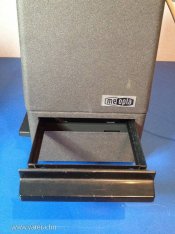This is copied from another thread, I printed this out when I started printing in colour. Might be of help:
If your cast is red: You need to add cyan to the print. Therefore, you need to subtract cyan from the filter pack.
Since you are using the two warm filters only, put "subtract cyan" into "warm" terms: "add red".
Equal amounts of magenta and yellow equal red. Thus, when you have a red cast,
add equal amounts magenta and yellow filtration to the filter pack.
If your cast is magenta: You need to add green to the print.
Therefore you need to subtract green from the filter pack.
This is the same thing as adding the compliment of green to your filter pack.
Thus, when you have a magenta cast, add magenta filtration.
If your cast is yellow: You need to add blue to the print. Therefore you need to subtract blue from the filter pack.
This is the same thing as adding the compliment of blue to your filter pack.
Thus, when you have a yellow cast, add yellow filtration.
If your cast is green: You need to add magenta to the print. Therefore you need to subtract magenta from the filter pack.
Thus, when you have a green cast, subtract magenta filtration.
If your cast is blue: You need to add yellow to the print. Therefore you need to subtract yellow from the filter pack.
Thus, when you have a blue cast, subtract yellow filtration.
If your cast is cyan: You need to add red to the print. Therefore, you need to subtract red from the filter pack.
Equal amounts of red and yellow equal red. Subtract equal amounts magenta and yellow filtration to subtract red to the filter pack,
and thus add red to the print.
You should be able to at least on basic trend in all of this that you can use as a shortcut: If the print has a warm cast, you must add filtration.
If the print has a cool cast, you must subtract filtration.
Thus, when using just magenta and yellow filters (both of which are warm filters),
you always add filtration to cool a print and subtract filtration to warm it.













